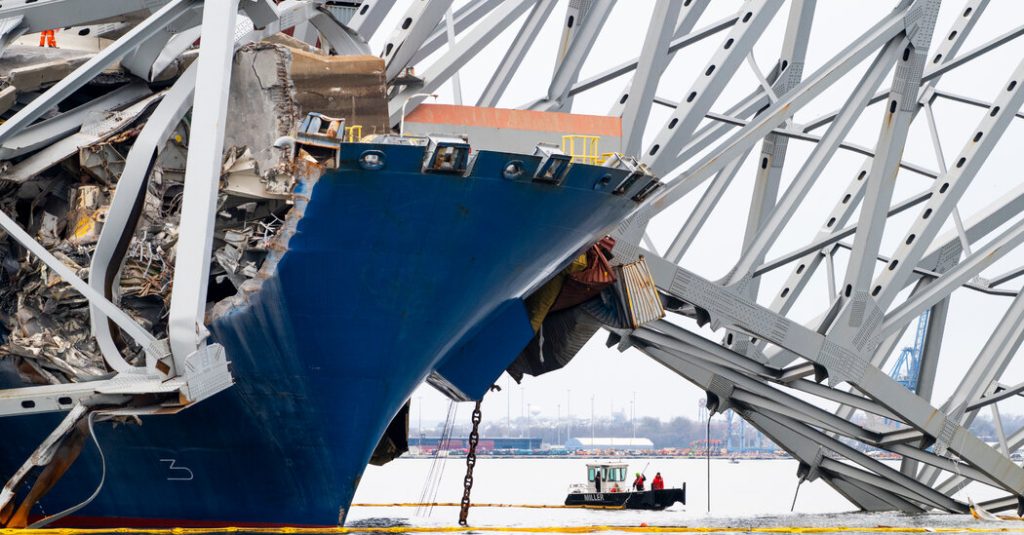A haunting scene of destruction unfolded deep in the Patapsco River in Baltimore, where the Francis Scott Key Bridge collapsed after being struck by the cargo ship Dali. Maroon containers larger than a car were twisted and crushed, steel beams warped into crooked arches, and jagged concrete pillars jutted out from the water. The wreckage reflected dimly on the gray-toned river, creating a tomb of destruction. Six construction workers lost their lives in the tragic accident as they were filling potholes on the bridge when it collapsed.
The U.S. Coast Guard allowed The New York Times to witness the devastation up close by riding aboard a response boat to the site of the disaster. As the boat approached the cargo ship, the massive scale of the collapse became apparent. State officials onboard expressed shock and disbelief at the extent of the destruction. Warped pieces of the bridge sliced through the steel deck of the ship, causing parts of the blue hull to peel outward. This created a jumbled metallic maze on the deck where workers navigated carefully, making the devastation all the more pronounced against the backdrop of the river.
Despite the magnitude of the collapse, few distinct sounds emanated from the site apart from the movement of water and boat engines. The recovery efforts were ongoing, with two bodies already found and four more yet to be recovered by divers. The bodies of Alejandro Hernandez Fuentes and Dorlian Ronial Castillo Cabrera were recovered during the week, leaving the remains of Miguel Luna, Maynor Yasir Suazo Sandoval, Jose López, and an unidentified man still trapped beneath the wreckage. The offramp portions of the bridge, now transformed into a deadly memorial, stood high as boats with cranes attached cruised nearby to assist in the search and recovery efforts.
As the Coast Guard ship turned around, the scene of the collapse began to fade into the pale waters of the horizon. The heavy clouds overhead seemed to match the somber mood, leaving the searing images of the destruction etched into memory. The gravity of the tragedy was further emphasized by the silence that pervaded the area, broken only by the occasional whirring of boat engines and the movement of water against debris. The bodies of the victims and the wreckage of the bridge and cargo ship stood as stark reminders of the price of the disaster.
The cargo ship Dali, its crew members all from India, remained docked at the site of the collapse, with a yellow boom floating around it to contain spills. The crew members, who had used an anchor to try and prevent the ship from hitting the bridge, appeared to be investigating the damage and navigating through the debris on the deck. Birds swirled nearby, emphasizing the contrast between the natural world and the man-made destruction. The images of the collapsed bridge, the twisted steel, and the efforts to recover the victims left a lasting impact on all who witnessed the aftermath of one of the worst bridge collapses in the country’s history.
The site of the Francis Scott Key Bridge collapse in Baltimore served as a stark reminder of the fragility of infrastructure and the devastating impact of accidents. The recovery efforts continued as divers searched for the remaining victims trapped beneath the wreckage. The sheer scale of the collapse, with twisted steel beams and crushed containers towering over the river, left a lasting impression on all who witnessed the scene. The haunting silence that enveloped the area added to the somber mood, emphasizing the tragedy that had unfolded. The efforts to recover the victims and assess the damage remained ongoing as the scene of the collapse faded into memory, leaving a profound impact on those who experienced it firsthand.


